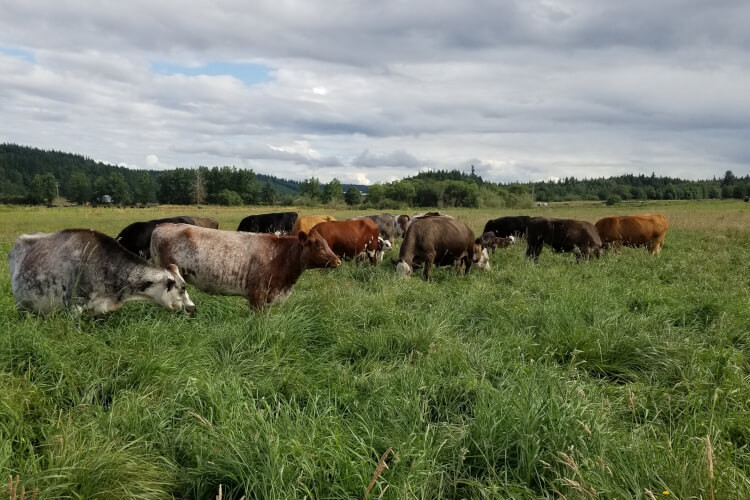Is Your Dinner Subject To Ransomware?
posted on
June 2, 2021
Their ransom demand? The grass on the other side of the fence.
The latest cyberattack was splashed across news feeds yesterday; this time its target is the nation’s food supply. Beef Supply Disrupted After Meat Processor Is Hit by Ransomware Attack, reads the New York Times. JBS, the Sao Paolo-based multinational which controls 20% of the US beef supply, was forced to close 9 beef plants, and production was disrupted at its pork, chicken and processed food plants. It’s uncertain how long it will take to resume full operations and what impact that will have on supply.
Just over a year ago we saw similar shutdowns due to COVID outbreaks in processing plants that had significant impacts on the industrial meat system. Then, as is the case now, the takeaway for all of us is just how fragile our highly centralized factory food system is. Whether it’s a global health crisis, a cyberattack, an extreme weather event, a cargo ship wedged in the Suez Canal, microchip shortages, or an armed conflict, there is a lot that can go wrong in our globalized supply chains. It’s like a Rube Goldberg creation.
Eat with confidence. While we are not immune to disruption, it’s pretty unlikely our local processors will be the target of cyber criminals! And if someone wasted their energy on targeting One Straw, they would be disappointed in the effects. The sun would still be growing grass, our cows would still be turning that solar energy into protein, we’d still have meat in our freezer, and we probably still have an actual paper receipt book and pen!
When you purchase food from us you can be assured that it is:
- supporting a decentralized and resilient regional food system
- nutritious and free of chemicals and pharmaceuticals
- produced with ethical treatment of livestock and humans
- regenerating natural resources rather than destroying them
As always, if you have any questions about these or any other topics please reach out via the phone or email listed at the bottom of the page. Good luck getting ahold of the CEO of JBS!
One Straw Ranch is a microscopic part of the global food supply. But we, and you, are part of a growing movement that is putting our food system on a sustainable path. As Wendell Berry so astutely observed, eating is an agricultural act. By extension, it is also an economic, environmental, and ethical act. We know you have choices in how to spend your food dollar, and we thank you for being a part of our mission!
I'd better leave it at that, the cows are ready to moo-ve.





